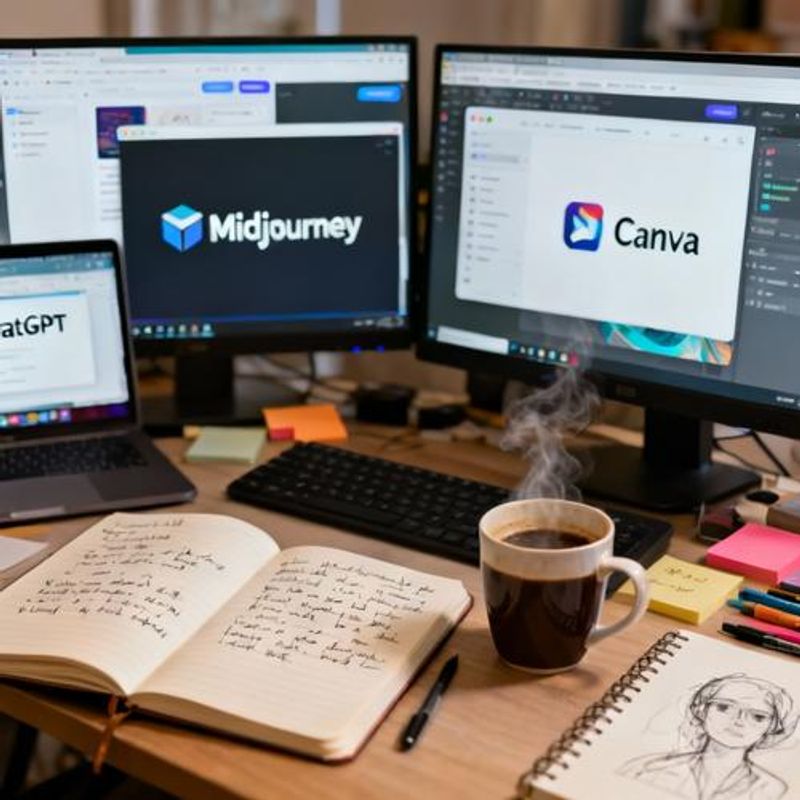How to Build a Thriving AI Community Platform for Content Creators: Complete 2024 Guide

Are you struggling to find the right AI tools while feeling isolated in your content creation journey? You're not alone. Thousands of content creators are building thriving AI community platforms where they share resources, collaborate on projects, and accelerate their growth together. This comprehensive guide will show you exactly how to create or join an AI community platform that transforms your content creation process and connects you with like-minded creators who understand your challenges.

Why Content Creators Need AI Community Platforms Now More Than Ever
Content creation has become increasingly complex with new AI tools launching weekly. Solo creators face information overload, tool fatigue, and the challenge of staying competitive while maintaining authenticity. Traditional social media platforms don't provide the focused, collaborative environment needed for serious content creators to share AI strategies, troubleshoot technical issues, or build meaningful professional relationships. AI community platforms fill this gap by creating dedicated spaces where creators can learn from each other's experiences, discover vetted tools, and collaborate on projects that amplify their individual efforts.
Key Benefits: What You'll Gain from an AI Community Platform
Before diving into the how-to details, here's what successful AI community platforms deliver to content creators:
- Access to curated AI tool recommendations with real user reviews and use cases
- Collaborative opportunities for larger projects and cross-promotion
- Direct feedback on AI-generated content from experienced creators
- Early access to beta tools and exclusive educational resources
- Professional networking opportunities with industry experts and potential clients

Step 1: Choose the Right Platform Foundation
Your platform choice determines your community's growth potential and user experience. Discord excels for real-time conversations and has built-in voice channels for live workshops, making it ideal for creator communities under 10,000 members. Slack provides better organization for professional discussions but limits message history on free plans. Circle and Mighty Networks offer more traditional forum experiences with better content organization and monetization options. For larger communities, consider hybrid approaches using Discord for daily chat and Circle for structured courses and resources. Evaluate based on your target community size, engagement style preferences, and whether you plan to monetize access.
Step 2: Design Your Community Structure
Successful AI community platforms organize around specific content types and creator needs. Create dedicated channels for tool reviews, prompt sharing, collaboration requests, and skill-specific discussions (writing, video, design, etc.). Include a beginner-friendly onboarding area where new members can introduce themselves and access starter resources. Establish clear posting guidelines that encourage constructive feedback while preventing spam or self-promotion abuse. Consider implementing member levels or roles based on expertise and contribution levels to encourage engagement and recognize valuable community members.
Step 3: Seed Your Community with Valuable Content
Empty communities don't attract members. Before inviting others, populate your platform with high-quality foundation content. Create comprehensive AI tool databases with honest reviews, use cases, and pricing information. Share prompt libraries organized by content type and industry. Post case studies showing before-and-after examples of AI-enhanced content. Develop templates and workflows that members can immediately apply to their projects. This content serves as both attraction for new members and conversation starters that encourage ongoing engagement.
Step 4: Implement Engagement and Growth Systems
Sustainable communities require systems that encourage regular participation. Schedule weekly challenges like prompt competitions or AI tool experiments with specific themes. Host monthly virtual meetups featuring guest experts or member presentations. Create accountability partnerships where members share goals and progress updates. Implement recognition systems highlighting helpful members and interesting projects. Use automation tools like bots for welcome messages, content curation, and basic moderation, but maintain human oversight for meaningful interactions and conflict resolution.
Ready-to-Use Community Templates and Resources
Here are proven templates you can adapt for your AI community platform:
Welcome Message Template: 'Hi [Name]! Welcome to our AI creator community. Start by introducing yourself in #introductions with your content focus and biggest AI challenge. Check out our #tool-database for vetted recommendations, and don't miss this week's challenge in #weekly-experiments. Questions? Tag @moderators anytime.'
Tool Review Template: Tool Name | Category | Cost | Learning Curve (1-5) | Best For | Limitations | Overall Rating | Your Use Case Example
Collaboration Request Format: Project Type | Timeline | Skills Needed | Compensation/Revenue Share | Contact Method | Portfolio Examples Required

Common Pitfalls and How to Avoid Them
Many AI community platforms fail because founders underestimate the time investment required for consistent moderation and content creation. Avoid launching without at least 20 hours per week available for community management during the first three months. Don't allow your platform to become a dumping ground for AI tool affiliate links without genuine reviews. Prevent the community from becoming too broad by maintaining focus on your specific creator niche rather than trying to serve all content types. Address conflicts quickly and transparently to maintain trust. Most importantly, avoid the ghost town effect by ensuring consistent activity even during slow periods through scheduled content and proactive member outreach.
Your Next Steps: From Concept to Thriving Community
Building or joining an AI community platform transforms isolated content creation into collaborative growth. Start by choosing your platform and creating your first three channels this week. Invite five creator friends who share your AI interests and commit to posting valuable content daily for the first month. Remember that successful communities grow through consistent value delivery, not aggressive promotion. Whether you're building your own platform or seeking existing communities to join, focus on genuine connection and mutual support. The future of content creation is collaborative, and AI community platforms are the bridges connecting creators with the tools, knowledge, and partnerships they need to thrive.